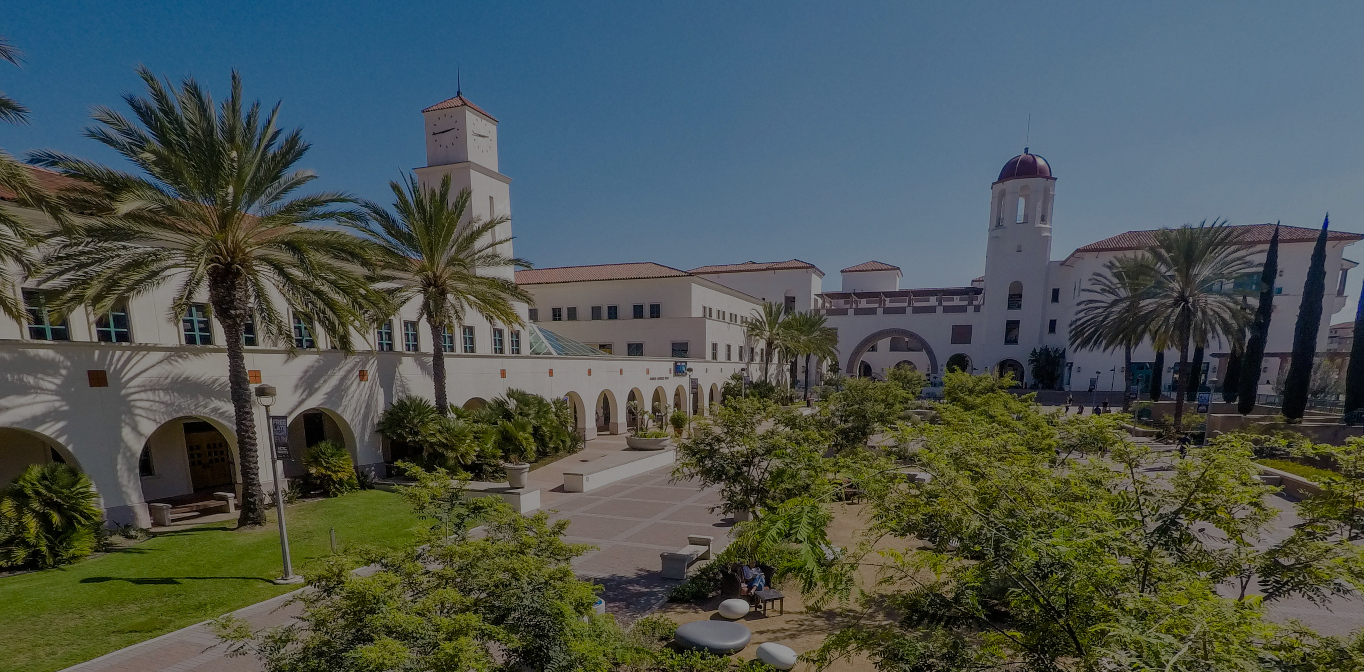Aztec Culture Education
For New Students
Online Education
During the 2019-2020 academic year, Aztec culture education curriculum was developed, and SDSU will soon begin requiring incoming freshmen and transfer students to complete an online training to acquaint them with the history of the university, its connection to local indigenous peoples and the historical context of SDSU's Aztec identity. The seven key principles presented in this online training are:
- San Diego State University is the oldest and most diverse institution of higher education in the region.
- The current San Diego State University campus is on land that has long been part of Kumeyaay territory.
- The Aztecs were a major civilization in Mexico; their ancestors and exchange relationships were widespread in North America, but no definitive evidence exists of formal Aztec settlements in San Diego.
- The Kumeyaay are not the Aztecs, although other local indigenous groups, such as the Luiseño and Cupeño, are distant Aztec relatives.
- San Diego State University has had multiple campuses across town and used different symbols over time.
- With greater awareness of historical racial discrimination and exploitation in the United States, there has been intense debate as to the appropriateness of the Aztecs as a prominent university symbol.
- In providing cultural and historical context for San Diego State University, the Aztecs, and the local indigenous population (Kumeyaay, Luiseño, Cupeño, and Cahuilla), this training encourages informed personal reflection on the Aztec symbol debate including issues of cultural appropriation and respect for all people; it encourages the use of restorative practices in an attempt to build community during a time of pronounced disconnection and polarization.
Indigenous Language Curriculum
The Nahuatl language remains one of the most dominant indigenous languages of the Mesoamerican region situated within the valley of Mexico and extending to El Salvador. It was the official language of the ancient people known as Aztecs by scholars of pre-contact Mesoamerica. Approximately 1.5 million people speak Nahuatl today.
The course sequence for Nahuatl at San Diego State University rests on the coursework developed through the Instituto de Docencia e Investigación Etnológica de Zacatecas (IDIEZ). The four semester sequence begins with face to face classroom instruction in the first semester by a native Nahuatl speaker at SDSU and moves to online and live streaming programming with native Nahuatl speakers at IDIEZ. The full course programming also is offered as part of the Western Alliance for Nahuatl (WAN). SDSU has committed to providing these academic partners with access to our existing Mixtec language program, based in SDSU’s Center for Latin American Studies (CLAS). The CLAS is renowned for its teaching and research of indigenous languages and cultures of Mexico through academic coursework and summer immersion programming. The Nahuatl language and culture program will form part of SDSU’s existing programs on culture and language to include Mixtec/Mixteco and Zapotec/Zapoteco.
The first semester of Nahuatl language was offered in the spring 2018 semester as LATAM 296. The course sequence is envisioned as follows: LATAM 130 Elementary Nahuatl; LATAM 131 Elementary Nahuatl; LATAM 230 Intermediate NahuatI; and LATAM 231 Advanced Intermediate Nahuatl. A three-semester sequence for Nahuatl fulfills SDSU’s foreign language requirements.
The course sequence for the language of the Mixtec (Tu’un Savi), known as Mixteco, is offered in a three course sequence as LATAM 110, LATAM 111, and LATAM 210. Zapoteco is offered during the summer as an immersion program in Juchitán, Oaxaca, Mexico through the Center for Latin American Studies.
Resources
The following publications and websites are useful resources for information about the Aztecs and the Kumeyaay, the original native inhabitants of what is now San Diego County.
Published works by renowned Mexican anthropologist and historian Miguel León-Portilla:
- “The Broken Spears”
- “Aztec Thought and Culture: A Study of the Ancient Nahuatl Mind”
- “The Aztec Image of Self and Society: An Introduction to Nahua Culture”
- “Los Antiguos Mexicanos a Traves de sus Cronicas y Cantares.”
Learn more about the Aztecs and also the Kumeyaay Nation and its regional bands by visiting:
- The Library of Congress: Exploring the Early Americas, Cortés and the Aztecs
- Encyclopedia Britannica: Aztec
- The Ancient History Encyclopedia: Templo Mayor
- SDSU's Center for Latin American Studies (offers language courses)
- The Kumeyaay of Southern California
- Viejas Band of Kumeyaay (San Diego)
- Southern California Tribal Chairman's Association
- Kumeyaay Timeline
Committee
Created during the 2016-2017 academic year, the Aztec Culture Education Committee (ACEC) is a committee of faculty, staff and students formed to address the need for a comprehensive education plan around SDSU’s Aztec identity. This group is committed to deepening campus knowledge about Aztec culture through co-curricular and cultural programs.
The ACEC drew its charge partially from the 2008 Associated Students referendum in support of the Aztec Culture Project. The referendum and project called for: education programs about Aztec culture to be offered to all incoming students; the commissioning of a glass mosaic mural depicting historically accurate images of the origins of the Aztec culture; and garden areas around campus dedicated to indigenous herbs and plants from areas where the Aztec culture thrived.
Members of Aztec Culture Education Committee:
- Ramona L. Pérez - Director, Center for Latin American Studies
- Randy Timm (Chair) - Dean of Students
- Christina Brown - Executive Director, Associated Students
- Jacob Alvarado (Waipuk) - Chair of Tribal Relations, Tribal Liaison
- Steve Schnall - Executive Associate Athletic Director of External Relations, Intercollegiate Athletics
- Seth Mallios - University History Curator
- Henry Villegas - Associate Director, Educational Opportunity Programs and Ethnic Affairs
- Armando Sepulveda - Vice President of External Relations, Associated Students
- Asha' Jones - Special Assistant to Vice President of Student Affairs
- James Newland - Alumnus ('88, '92)

